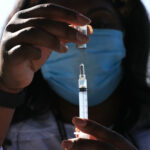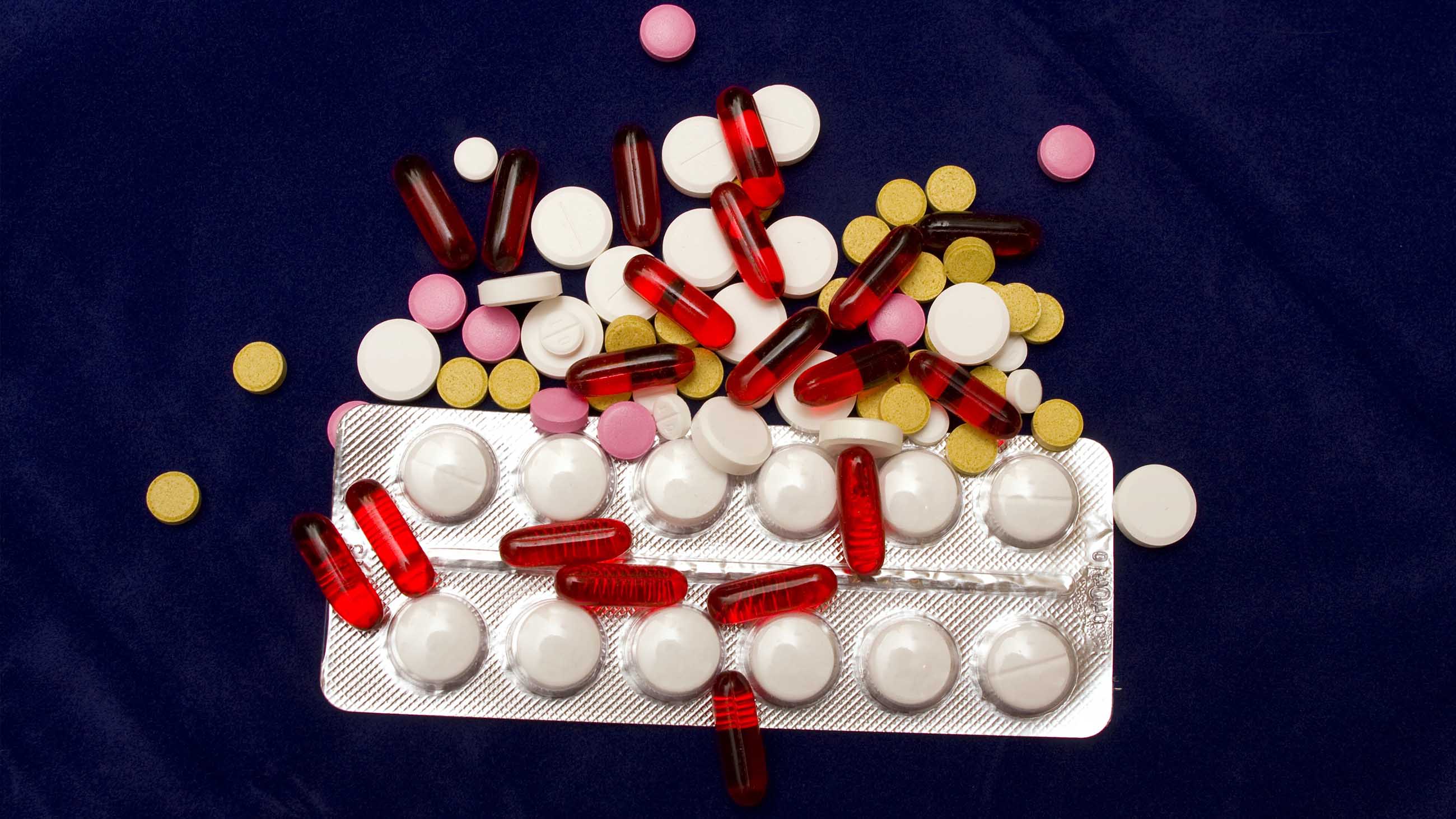We Have Reached Peak Pharma. There’s Nowhere to Go But Down.
For decades, no industry has been a more reliable moneymaker than pharmaceuticals. Immune to recession, drug companies regularly score 15 percent profit margins year after year. There is no danger of market saturation and, in the U.S., little prospect of government restraint of prices. Nearly all regulatory submissions win approval, and turnaround times are steadily decreasing. If you are an investor, what’s not to like?

But all dominant and expanding industries are fueled by resources of one type or another. Some of these are tangible and obvious, like gold deposits. Their exploitation follows a familiar arc. There is an initial rush to simply pick nuggets up off the ground. When the nuggets have been picked, miners must search for pebbles, then sand, then dust. There are still fortunes to be made, but more and more capital investment is needed to separate the gold from the dross.
If you are a drug company, drug targets are your resource. Our conception of disease has progressed through many understandings — as demonic possession, humoral imbalance, blockage of chi, disordering of machinery — and has now landed on the notion that it is either an invasion by microscopic creatures or bad behavior by large protein molecules. Health is restored by poisoning the invaders or correcting the proteins.
Drugs are the agents that accomplish these goals. To a first approximation, drugs are small molecules that bind to specific large molecules. This is the one-disease, one-protein, one-drug paradigm, and it is the essential value proposition of the pharmaceutical industry. Companies identify protein targets and make drugs that alter target behavior. They are very, very good at this. So good that the supply of new drugs largely depends on the supply of new drug targets.
The number of protein molecules that are plausible drug targets is large, but far from infinite. Each of these proteins is encoded by a gene; one of the surprises of human genomics is just how few protein-coding genes there are. Pre-genome estimates assumed that creatures as complicated and exquisite as humans could not possibly be specified by less than a hundred thousand genes. The true number is closer to 19,000, a bit fewer than small worms that live in the soil.
The number of proteins encoded by these genes that have anything to do with disease is much smaller, amounting to perhaps a thousand in total. Of these, more than half have already been “mined” by pharma: a current estimate is that our pharmacopeia targets 555 proteins in total. If we knew nothing else about drug discovery and development, we would know that the pace of new drug introduction is bound to decline.
But we do know a good deal more. We know that the rate of new drug approval (about 27 per year) has held steady for the past two decades, with no sign of a bump from genomics. And we know that the clinical value of these new drugs is shrinking, even as the search and exploitation of new targets intensifies.
We know that the cost of bringing each of these new drugs to market increases at an exponential rate. Indeed this rate, 9 percent per year, is so steady, persisting unchanged through different regulatory regimes and new technological advances, that it has been given a name: “Eroom’s Law” (Moore’s law in reverse). Nine percent may not sound like much, but it means that costs double every 8 years. In less than a decade, the cost of a new drug approval, now $2.6 billion, will be at $5 billion. In 16 years, it will be $10 billion.
The dynamics of this decline are precisely those of a gold mine. The fist-sized nuggets have all been found, the gravel and sand is getting more expensive to recover, and soon there will be nothing but dust.
Knowing this, you don’t have to have a degree in economics to figure out that the day will come when the average new drug candidate is a money loser. That day has already arrived for some drugs. Britain’s Office of Health Economics calculates that the value of new antibiotic candidates is negative $45 million. Pharmaceutical companies figured this out several years ago and most have eliminated their antibiotic R&D programs. Other R&D programs are on the chopping block.
Increasingly, the new drugs that are approved share two characteristics: (1) they are “orphan” drugs that treat limited patient populations and (2) they are obscenely expensive. Prior to the Orphan Drug Act of 1983, U.S. drug companies introduced about one orphan drug (defined as treating fewer than 200,000 patients) per year. Orphans — which include “personalized” medicines — now constitute about 40 percent of all new drug approvals and will soon be a majority. Their median price? A cool $83,000 per patient per year.
Get used to this. Moderately-priced mass-market drugs will disappear. Or rather, they will go off-patent and become generics. With no R&D expenses to recoup, they will become cheap commodities, costing a few dozen or hundred dollars per treatment. New drugs, especially those protected from competition by the Orphan Drug Act, will cost hundreds of thousands of dollars per year. Don’t be surprised when the first million-dollar treatment hits the market.
These developments are no kind of tragedy — drugs cannot do much more to lengthen human lifespan. Nor are these developments the result of a conspiracy or of unusual levels of greed. They are just the end-stage of the depletion of a resource.
The one-disease, one-protein, one-drug paradigm has served us well, but is approaching the limit of its usefulness. We have already found most of the safe and effective drugs that we will ever find. In time, we will no longer look for salvation in a pill, but will learn to engineer our internal environments — particularly our immune systems and microbiomes — and detoxify our external environments. Some drug companies will adapt and thrive, others will die. None of them will reliably continue to make money by cranking out small molecules that bind to big molecules. I’m not alone in thinking that we may have reached peak pharma, and there is nowhere to go but down.
Drew Smith is a molecular biologist and long-distance hiker who has held positions at several biotech and medical technology startups, most recently MicroPhage, Inc., which declared bankruptcy in 2012. He now writes about science and hiking at drewsmithblog.com.











Comments are automatically closed one year after article publication. Archived comments are below.
good points but pharma needs to invest in R & D to overcome diseases and pharma is still makeing breakthrough products like sovaldi , harvoni which is helping both patients and business
Great blog, I’m very much in line with your thinking. We need to open up new areas of drug discovery with completely new approaches, otherwise the industry will enter terminal decline as we continue to face diminishing returns with the established models:
https://www.linkedin.com/pulse/pharmas-broken-business-model-industry-brink-terminal-kelvin-stott/
Most pharmaceuticals not directed at microbes act on the assumption that there is something wrong with the proteins.
In fact the usual issue is that the wrong proteins have been activated due to unacknowledged stressors in our environment.These are usually physical.
We now know that there is a direct connection between the autonomic nervous system and the immune system and that this association can be “hacked” buy using vagus nerve stimulation. This procedure previously required an implanted device, but is now able to be done by a slight modification to a Tens machine with one of the contacts applied at the ear.
One of the major researchers in the area is a neurosurgeon by the name of Dr Kevin Tracey- who was involved in establishing the connection between the vagus nerve and the spleen, and in clinical research- including research showing a dramatic symptomatic improvement in treatment resistant rheumatoid arthritis using implanted vagus nerve simulators.
His estimate is that once vagus nerve stimulation is fully implemented, stimulation will HALVE the market for pharmaceutical drugs.
I tend to find this less of a concern. Although there may be a limited number of “targets”, many of the “druggable” targets are complicated by transcriptional heterogeneity and post-translational modifications. There is also then the question of expanding the definition of druggable targets, which is not a static definition. You may be somewhat right, in that the easiest, or low-hanging fruit, will be assessed and developed within a few decades, but I would not call vacation time just yet. Failures in development are not all due to ADME or formulation problems, and in many cases, looking at a smarter way to hit a target will have benefits. Unlike oil, or other fossil fuels, there is a long way to go for pharmaceutical interventions. And, although we can argue about the current “peak” for oil, the industry will remain competitive for a long time, and profitable, due to the ability of smart people to find valuable means to use the hydrocarbons, and to capture them from sources that are not currently favored.
Interesting point of view! I was wondering whether the decline in Pharma profit (if it happens!) as suggested will coincide with higher longevity or better cure for all of us. We may also have newer ways of treating diseases! 8-10 years is a long time these days and who knows what disruptive innovation is in store!
This sounds and feels like the 1960s-70s “we are running out of everything,” Limits to Growth mentality. You see that right at the start with the prelude about oil.
Good point. I don’t doubt that new technologies will identify a few new druggable protein targets, and address some previously undruggable targets. But there is a huge scale difference between undrugged human proteins and oil reserves. The total amount of oil in the Earth’s crust is mind-bogglingly large. We haven’t tapped even close to 1% of it. Therefore advances in recovery technology can have major effects on the amount of oil that is accessible. By contrast, there are a finite number of human proteins. The set of proteins that have a role in common diseases is a fairly small subset of these (about 10%). The number of these that have already been drugged is fairly large. We have found and drugged most of the druggable proteins that exist. That’s not even close to being the case for hydrocarbons. For what it’s worth, the editors added that part about oil – I deliberately refrained from that analogy because the existence of fracking technology is not a secret.
Well, we haven’t quite got the first million dollar drug yet, but we just took a step closer. The first gene therapy for an inherited disease has been cleared by the FDA and it will be priced at a tidy $850K.
See https://www.washingtonpost.com/amphtml/news/wonk/wp/2018/01/03/gene-therapy-for-inherited-blindness-sets-precedent-an-850000-price-tag/
Much to think about
Interesting perspective. But your argument seems to be that the ‘low hanging fruit’ will be/have been picked and targets are in short supply. As evidence, for example, you point to the number of proteins:
“The number of protein molecules that are plausible drug targets is large, but far from infinite. Each of these proteins is encoded by a gene; one of the surprises of human genomics is just how few protein-coding genes there are. Pre-genome estimates assumed that creatures as complicated and exquisite as humans could not possibly be specified by less than a hundred thousand genes. The true number is closer to 19,000, a bit fewer than small worms that live in the soil.”
Given your listed credentials, I can’t help put feel that this is a disingenuous argument. Gene regulation and protein biology is incredibly complicated. Biological complexity is not determined by how many genes we have, but how those genes, and thus proteins are regulated. Potential new drugs can target microRNAs, post-transcriptional modification machinery, the epigentic states of those genes, the enzymatic pathways for said proteins etc. This is all to say that drugs will become more specialized and companies / academia will innovate to treat disease. The problem is not the number of targets but the time, money, man-power, and structure of discovery itself (e.g.incentive structure) that hinders discovery. Indeed, the very brief history of science has already shown that companies and academia innovate and come up with more powerful tools (take a look at gene-editing technology companies for example or advancements in modeling to predict and screen drugs). Applying those tools to clinical populations will be challenge, but it will happen given the financial and deregulatory incentives you describe in your article.
Samuel – All good points (thanks!), and I would have included many of them in a longer article. Pharma companies will not go extinct (at least not all of them), nor will they fail to produce new medicines. They just won’t do it in the way that they have for decades. They had a business/tech model that was arguably the most lucrative in the history of the world’s economy. It is that model, and its guaranteed big profits which is ending, not discovery or medicine or even the pharma companies themselves.
This where Artificial Intelligences will come to the rescu!
Don’t worry, pharma will go on the upper side quite soon with the avent of the deep learning. This will cause scientific discovery to explose from now to 2050 an more…
That was an interesting article!